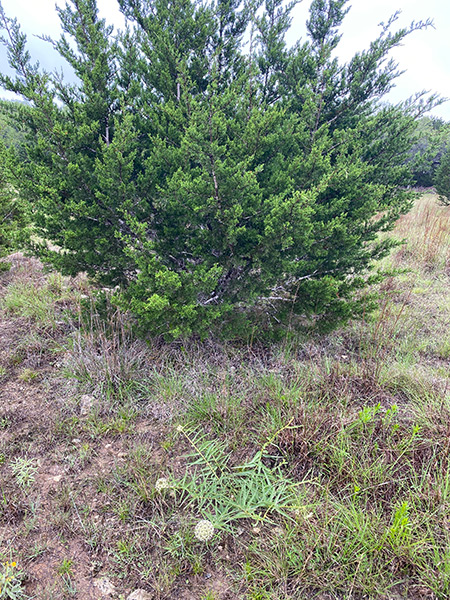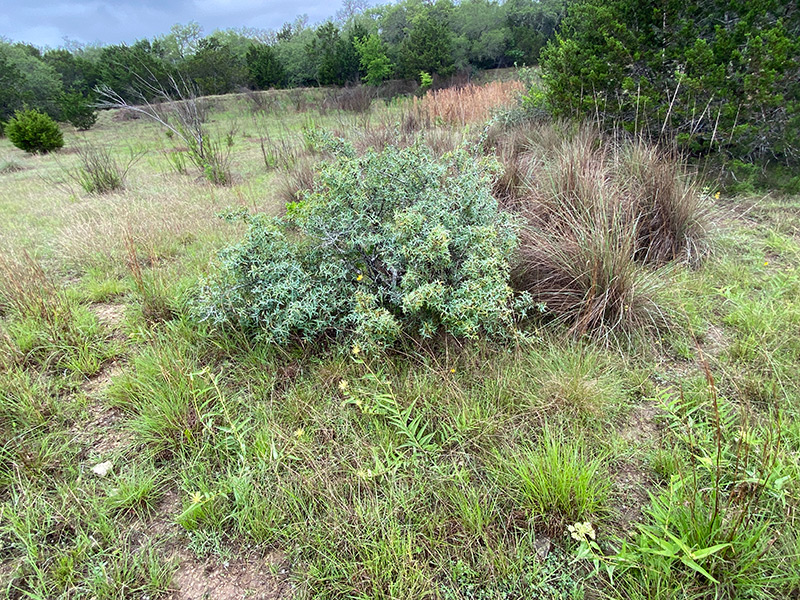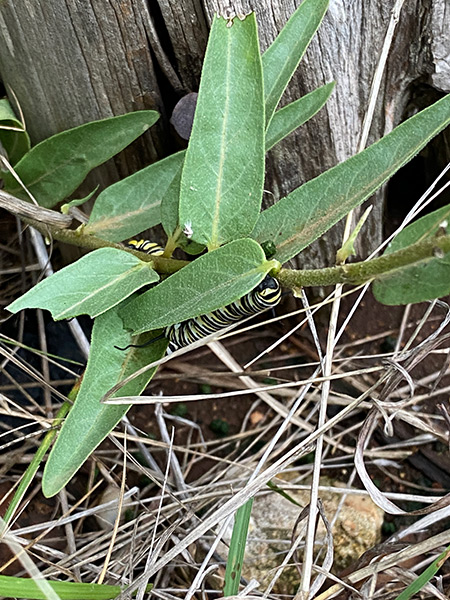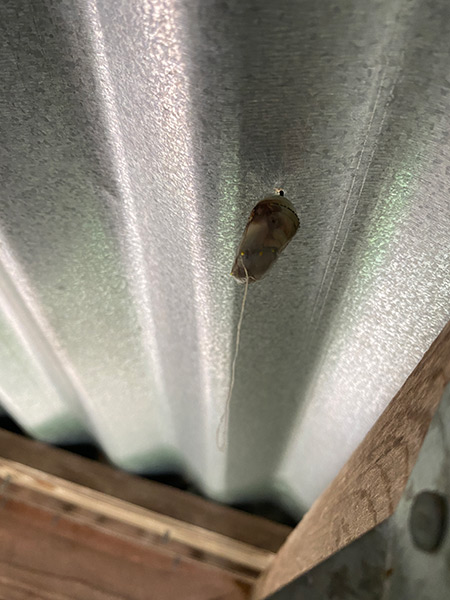April 30 2021
- Observations of Monarch habitat

An Antelope Horn milkweed flower with several stems denuded of leaves at the base of an Ashe Juniper tree, indicating Monarch Catrepillar activity.

Antelope Horn milkweed flowers beside an Agarita plant. The stems of the milkweed are similarly defoliated as the photo above. Antelope Horn milkweeds further away from trees and shrubs rarely if ever show signs of caterpillar activity.

Two Monarch Caterpillars feeding on Antelope Horn milkweed plants next to a pole barn roof support pole. Caterpillars are often found on the underside of the leaves. Caretakers suspect that a female lays her eggs on milkweed plants fairly near a structure so that the caterpillar has better success to safely pupate into a crysalis, without having to cover open ground very far or struggle through tall grass and thatch.

The Tachinid Fly is a predator of the Monarch Caterpillars. It lays eggs inside the Caterpillar, evidence of this predator is seen with a thin string hanging below the Chrysalis. When the fly's eggs hatch, they eat the inside of the caterpillar and/or Chrysalis. Other predators include Ladybugs who have been observed searching Antelope Horn plants looking to eat very small Monarch eggs.
This entry was posted on Friday April 30 2021 at 12:00 am and is filed under Census, Habitat, 2021 You can follow any responses to this entry through the RSS 2.0 feed.
